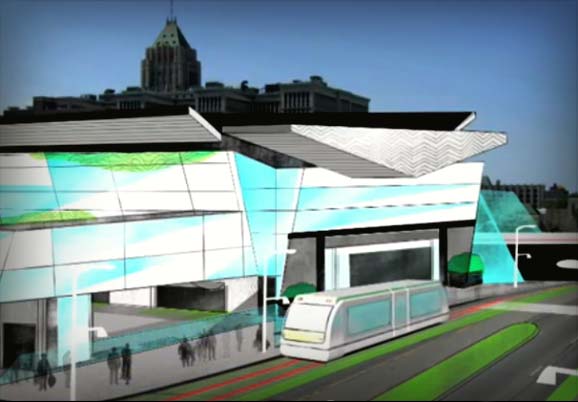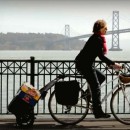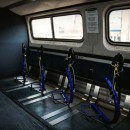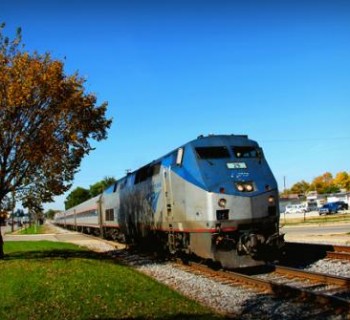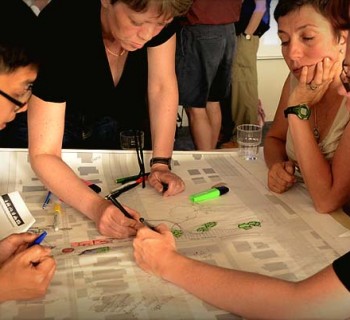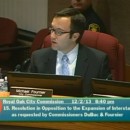Editor's Note: This article was originally posted on alexbhill.org and is reposted with permission.
I won’t claim to be an expert on Detroit transit history, but public transit is a major issue in Detroit that no one living in or visiting Detroit can ignore. I just took my wife and my best friend for the first time on the Detroit People Mover (DPM). We parked near Cobo to avoid a Tiger’s game and the accompanying traffic/ parking insanity, then we took the DPM to Broadway station to grab dinner at Small Plates. The whole ride I kept thinking about the critical link between the amount of parking available downtown and the lack of reliable public transit.
Want to increase public transit? Get rid of parking!
Parking could be an entire rant of its own, but I want to focus on public transit. Detroit’s most well known piece of industrial “ruin porn” is Michigan Central Station (MCS), originally owned by the New York Central Railroad and built by the same architectural firm that constructed Grand Central Station in New York City. The building was supposed to exude elegance and grandeur, but was marked as an oddity due to the disconnect between the three-story train station against a backdrop of an eighteen-story nondescript office tower.
A Real Public Transit System
The trains arrived in Michigan Central terminal and a passenger could decide to catch a streetcar down Michigan Avenue to downtown or choose to take a horse-drawn carriage (later replaced by taxis). At its peak in 1914, nearly 200 trains left the station each day and in the early 1940s over 4,000 passengers rode the trains daily. Henry Ford even had his own private car that he took between New York and Detroit. During the following years of World War II, streetcars were mandated over buses in order to conserve gasoline and rubber. These were the glory days of public transit in Detroit, when you could catch a regular train to Chicago or New York and had the option to take a working network of streetcars throughout the city. Michigan Central Station was a working transit center for the city. In the 1950s, rail travel dropped off significantly with the rise of the auto industry and the construction of the highways. By 1956, all of the streetcars had been converted into Ford coach buses. In 1975, MCS was sold to the newly formed Amtrak, but they couldn’t maintain the costs associated with the massive building with so few passengers and again sold MCS in 1985. With less than a dozen trains a day, the last train left for Chicago from MCS in 1988. Now the building sits on the historic registry, but is unsalvageable and unfeasible as a transit center any longer.
Detroit’s public transit system has been plagued by issues for years. Transit received a boost in 2005 when the Detroit Economic Growth Corporation (DEGC) announced plans for the Rosa Parks Transit Center, which would run alongside the Michigan Avenue People Mover station. The magnificent tensile roof structure wasn’t awarded a contract until 2007 and was finally completed in 2009. Unfortunately, it seems that the only long term planning that occurred was to place it next to a People Mover station. The Rosa Parks Transit Center is located in an odd section of downtown that does not lend itself to integration with a larger citywide or regional transit system. Detroit’s downtown has an iconic hub-and-spoke street design making it fun to look at on a map, but difficult to maneuver for public transit. Likewise, Rosa Parks Transit Center was not constructed to act like other transit centers in large cities.
In other large cities, which Detroit is arguably no where near similar, transit centers are located roughly an average 2 miles away from the city’s main tourist attractions. New York City is allowed to be different because of its high density and small area.
CITY TRANSIT MODES ATTRACTION DISTANCE
- Chicago Union Station Amtrak, Metra Rail, “L” Rail, City Bus, Bike Share Navy Pier 2.4 mi
- Washington D.C. Union Station Amtrak, Metro Subway, City Bus, Bike Share White House 2.4 mi
- New York City Grand Central Amtrak, Subway, City Bus, Bike Share Times Square 0.8 mi
- Detroit Rosa Parks City Bus, People Mover Rail Comerica Park/ Grand Circus 0.7 mi
PAST
- Detroit Michigan Central Amtrak, Streetcar Rail, City Bus Comerica Park/ Grand Circus 2.0 mi
FUTURE
- Detroit New Center Amtrak, M1-Rail, City Bus, Bike Share Comerica Park/ Grand Circus 2.5 mi
A good example of the lack of long term planning is the filming of movies downtown (i.e. Transformers 4). The Rosa Parks Transit Center was shutdown during filming due to its proximity to downtown. This begs the question, do we really think nothing else will happen in downtown Detroit that might cause a disruption of transit service? My bet is “No” we hope there will be a myriad of events and happenings downtown that will bring in crowds of people on a regular basis. Then why was a transit center planned in the middle of downtown? There needs to be distance between attractions and transit centers to make public transit systems a viable alternative. The other key factor for a transit center is that they are multi-modal: Amtrak + local rail + bus system + bike-share, etc. Thankfully, Megabus also uses the Rosa Parks Transit Center as a pickup and drop-off point.
A New Transit Center in New Center
This all leads me to my pitch for a new and intelligent transit center for Detroit. The New Center area marked by the Fisher Building is a perfect area to house an intelligent transit center. There is plenty of space for parking, an existing large workforce that needs to commute, and an Amtrak train station – not to mention it will also be situated along the new M1-Rail line, which also meets up with DDOT bus stops. After mashing up transit pathways for DDOT, SMART, DPM, and the new M1-Rail I came to the conclusion that expanding the existing Amtrak station across the tracks would make sense to bring together a multi-modal transit system for the city where you could catch a DDOT bus off the M1-Rail or take the M1-Rail downtown to the People Mover or return to Detroit using the Amtrak and choose how you want to get home.
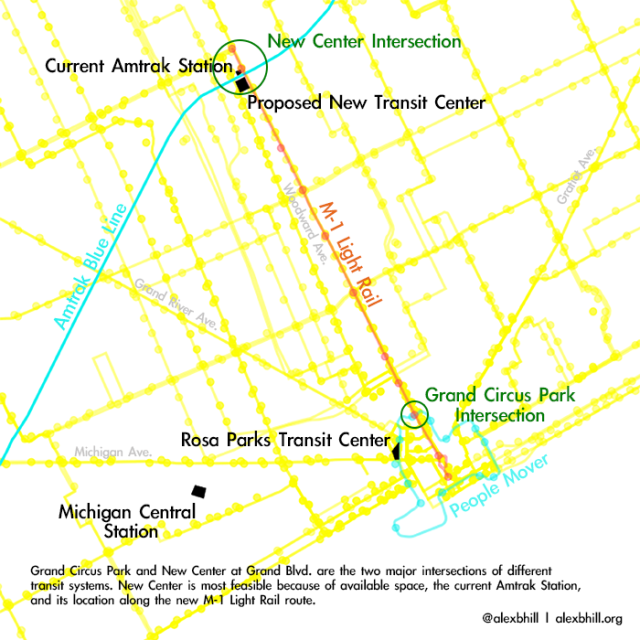
As I was preparing to write all these ideas down, I came across this video from America2050, which proposed a high-speed rail connecting Chicago and Detroit (developing “megaregions“) and depicted a new fictional transit center located exactly where I had imagined it should be! A new transit center in New Center matches what other large cities have with a multi-modal center located roughly 2.5 miles away from a city’s main attraction. New Center is also a nice way point between the suburbs, offices in New Center, and attractions downtown allowing people to utilize it for multiple reasons.
Working public transit is critical for more than just tourists and businesses. Residents, young people, and especially the working poor rely on public transit to be able to get jobs and keep them. A working public transit system has the potential to increase employment which in turn helps decrease poverty and crime. In an odd way public transit makes urban revitalization benefit people across a city.


